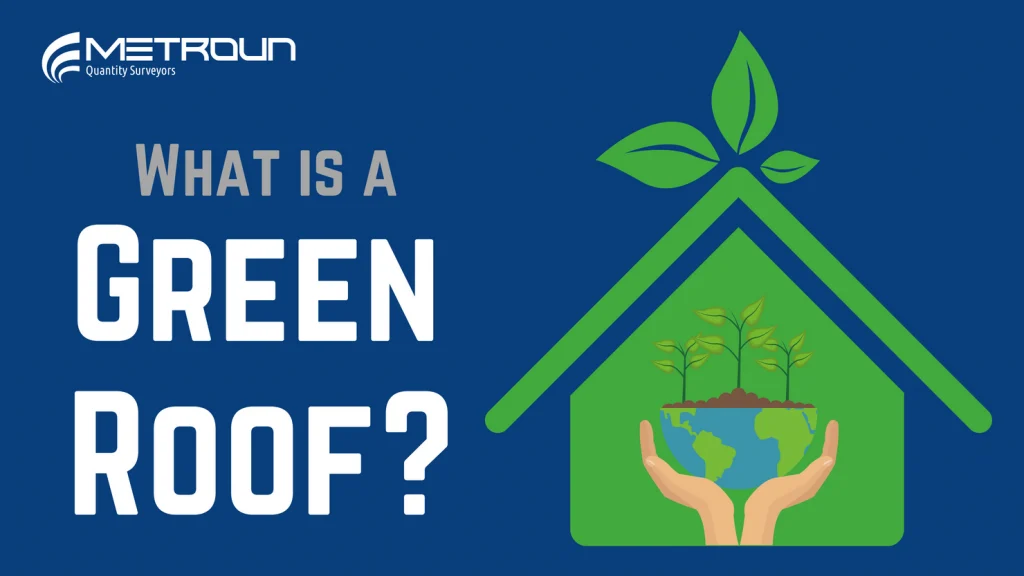With more people living in urban cities and heightened global interest being paid to carbon emissions, it’s no wonder there’s an increase in interest toward green roof construction. In this article we’ll be looking into what green roofs are, the different types of roofs and the benefits they can provide.

The Green Roof Organisation provides the following definition for green roofs:
“A green roof is created when a planting scheme is established on a roof structure… Green roofs can be designed as recreational spaces to be enjoyed by people, as visual, sustainable or ecological features to support wildlife or a combination of both”
Green roofs can turn a dull, grey urban area into a vibrant ecological landscape. The benefits they can provide are not only environmental, but also economic and social.
Before we get into the benefits, it is important to understand the four different types of green roofs available.
Number one – Extensive roof greening
This type of roof is very low maintenance, and is not intended for regular human usage. It may actually be rarely seen by humans at all. They are less aesthetically pleasing but often regarded as more ecological due to the low input of labour and water. These roofs are usually made up of succulents or other hardy plant species like sedum. The substrate is shallow (typically less then 100mm) which makes for low load baring on structures.
Number two – Biodiverse roof greening
This type of green roof usually aims to replicate the habitat of the building’s location prior to construction. Often this style of roof will attract both flora and fauna (GRO, 2014). This style of greening will also be low on maintenance with occasional visits to deal with any invasive species. Typically, the roof’s depth ranges from 100-150mm and the surface is not flat but mounded to replicate the surrounding environment (Dunnett and Kingsbury, 2008). The aim of this type of greening is to create a self-sustaining habitat.
Number three – Semi intensive greening
A hybrid of both extensive and intensive greening. A user may wish to attract benefits from both extensive and intensive greening by combining the two. Often between 100- 200mm, this type of green roof requires more maintenance than extensive roofing but still less than intensive roofing.
Number four – Intensive roof greening
Considered aesthetically similar to a conventional garden (Dunnett and Kingsbury, 2008). This type of greening is used in areas which have a high volume of human activity and provides a clean-cut appearance rather than the wild look of an extensive roof. As a result, this roof will require regular maintenance and therefore will cost significantly more. Intensive roofs are typically built with over 200mm substrate
So let’s look into some of the benefits of green roofs. The first which is probably most obvious is environmental. Green roofs can absorb 1.79 kg of CO2 and release 1.3 kg of O2 per square meter per year. In addition, green roofs reverse something called the Urban Heat Island Effect where heat from the sun is absorbed by the hard surfaces during the day, then radiated back during the night creating a hotter city micro climate. Studies have shown that with enough green roofs incorporated into big cities, the effect on air conditioning usage would be a reduction of 40% boasting both environmental and economic benefits.
Finally, green roofs have a large social impact. Not only does the roof provide aesthetic value to the landscape, but it can also be beneficial to people’s wellbeing. A study found that people that spent time gardening had improved levels of self-esteem and mood. Gardening/ spending time in green roof gardens can therefore play a key role in combating mental health issues and increasing wellbeing.
Why not watch our video on green roofs:

References:
- Dunnett, N. and Kingsbury, N., 2008. Planting Green Roofs And Living Walls. Portland, Oregon: Timber Press.
- The Green Roof Centre. 2020. [online] Available at <https://www.thegreenroofcentre.co.uk/green_roofs/faq.html>




